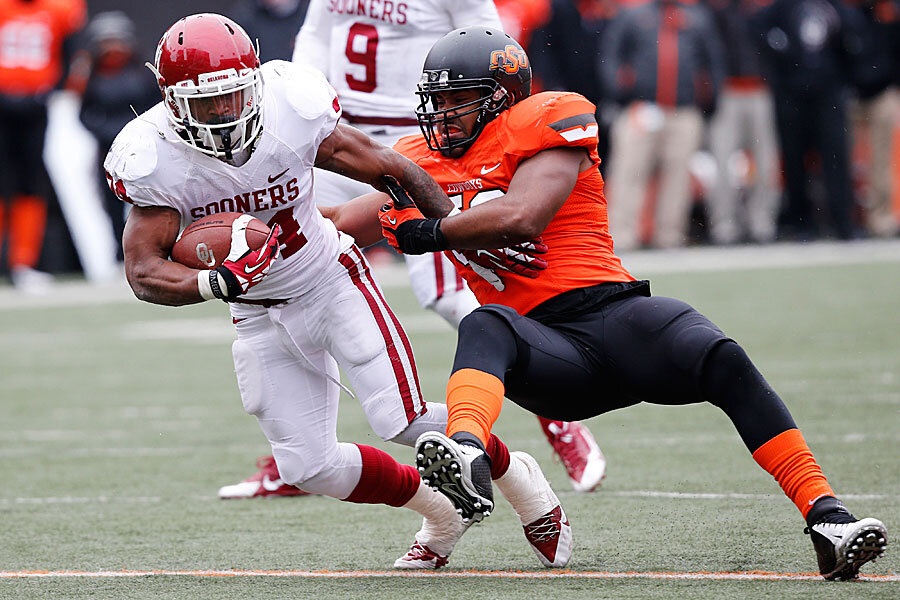Oklahoma earthquake: 4.3 temblor rattles state
Loading...
| Oklahoma City
A 4.5-magnitude earthquake in central Oklahoma shook residents Saturday, just weeks after the two-year anniversary of the strongest earthquake ever recorded in the Sooner state.
The shaking is increasingly commonplace in the state, so after the initial surprise, customers at a central Oklahoma restaurant returned their attention to an in-state college football rivalry game.
Marty Doepke, general manager of Pops Restaurant in Arcadia, said there was no damage at the restaurant that's known for its selection of some 600 soft drinks — hundreds of which are displayed along shelves.
"It shook a bit, that's for sure. Everybody just kind of stopped and looked around," Doepke said. "Everybody almost automatically knew what it was and then went back to watching the Bedlam game" — Oklahoma State and Oklahoma.
The earthquake was centered near Arcadia, about 14 miles northeast of Oklahoma City, and was about 5 miles deep, the U.S. Geological Survey reported.
Oklahoma Department of Emergency Management spokeswoman Keli Cain said no injuries or damage were reported. A spokesman for the Oklahoma County Sheriff's Office did not immediately return a phone call.
Oklahoma is crisscrossed with fault lines that generate frequent small earthquakes, most too weak to be felt. But after decades of limited seismic activity in this region, earthquakes have become more common in the last several years.
The strongest earthquake on record in Oklahoma was a magnitude-5.6 earthquake on Nov. 5, 2011. That time, the football stadium in Stillwater, about 70 miles north of Oklahoma City, started shaking just after OSU defeated No. 17 Kansas State and left ESPN anchor Kirk Herbstreit wide-eyed during a postgame telecast.
That temblor also toppled castle-like turrets at St. Gregory's University in Shawnee, some 40 miles east of Oklahoma City.
Since 2009, more than 200 magnitude-3.0 or greater earthquakes have hit the state's midsection, according to the Geological Survey. Scientists are not sure why seismic activity has spiked, but one theory is that it could be related to wastewater from oil and gas drilling that is often discarded by injecting it deep into underground wells.
Saturday's tremor was felt in the northern Oklahoma City suburb of Edmond, where Gabriella Devero, a University of Central Oklahoma student, was visiting her grandmother and experienced her first earthquake.
"My jaw was just wide open, 'Was I actually going through an earthquake?'" Devero said about her initial thoughts. "Then I was like, 'Yep this is actually an earthquake.'
She continued: "My grandma came into the room and was like 'Gabby are you OK,' and I was like, 'yes, I'm just terrified.'"
Copyright 2013 The Associated Press. All rights reserved. This material may not be published, broadcast, rewritten or redistributed.







